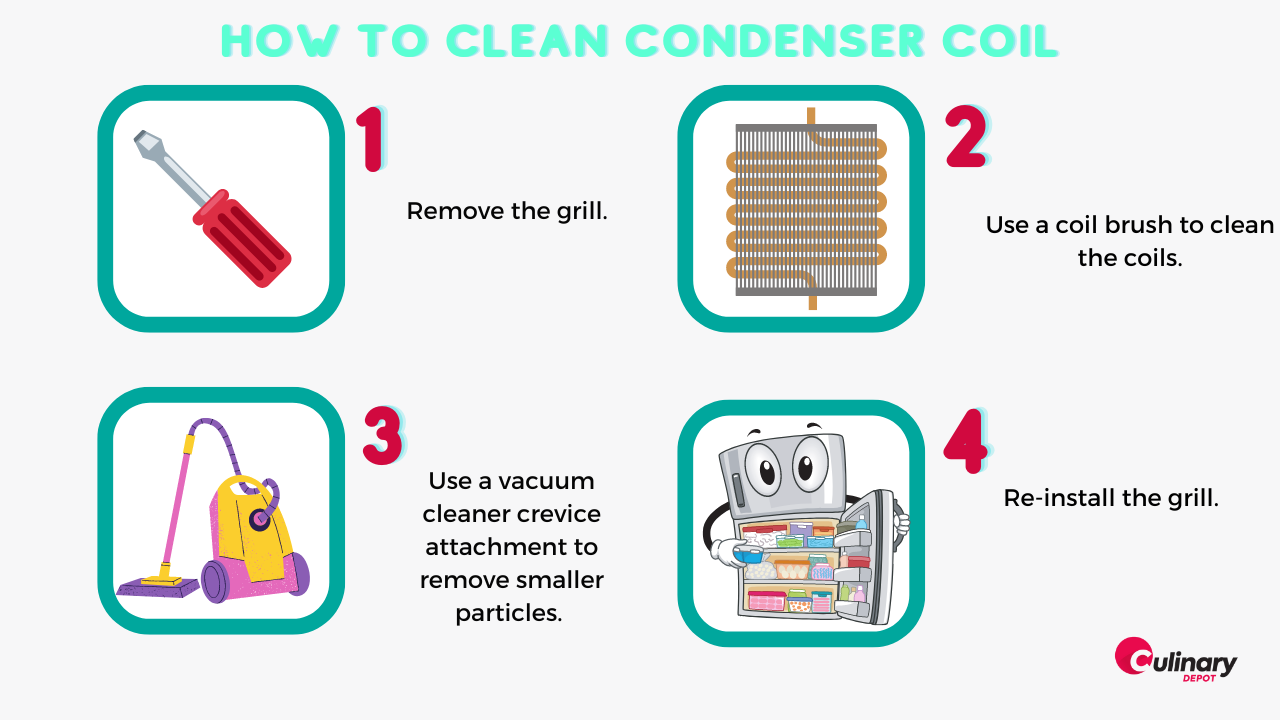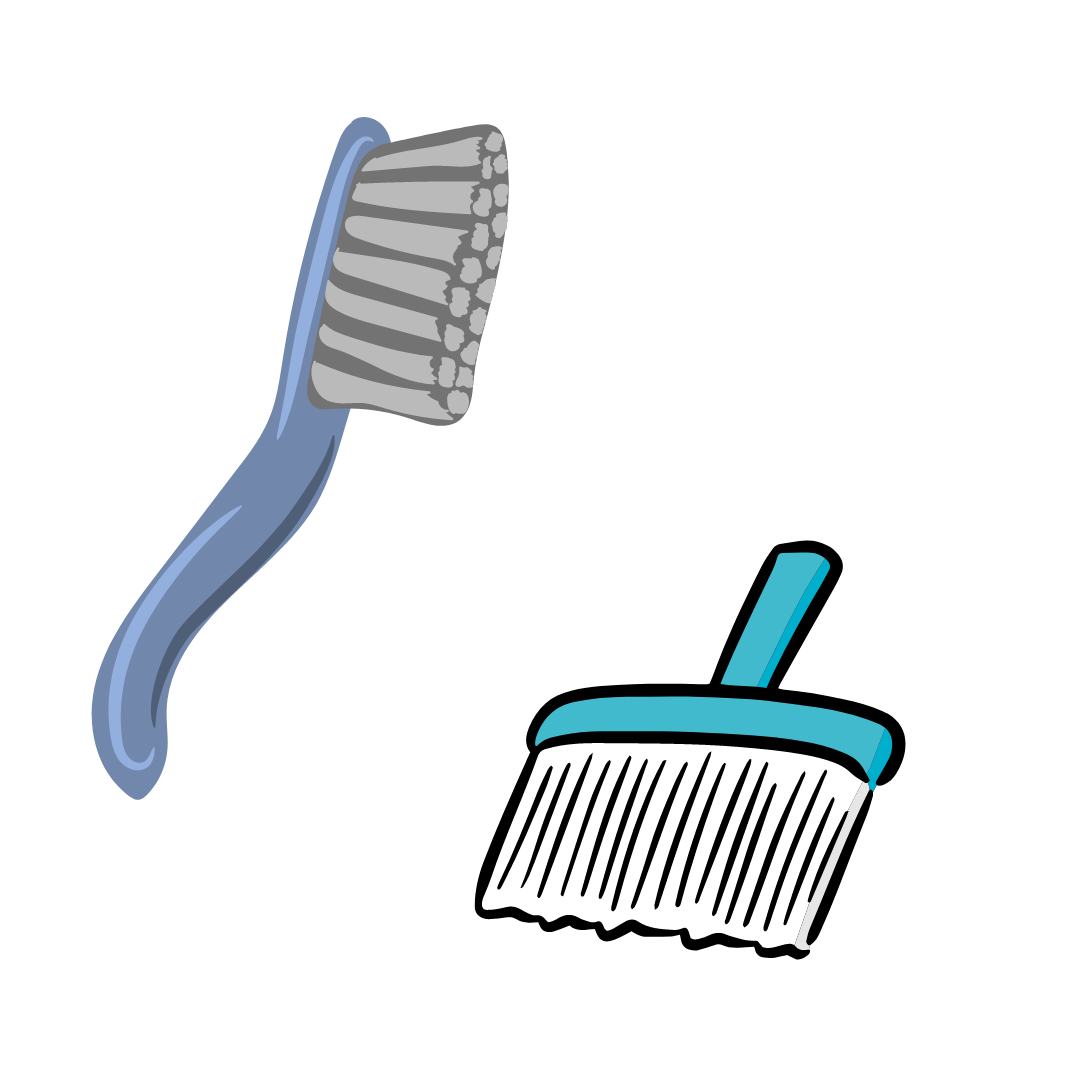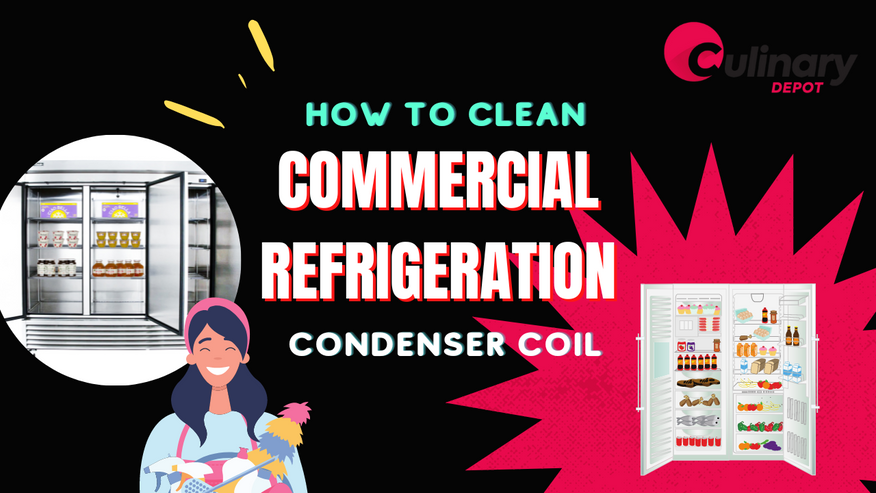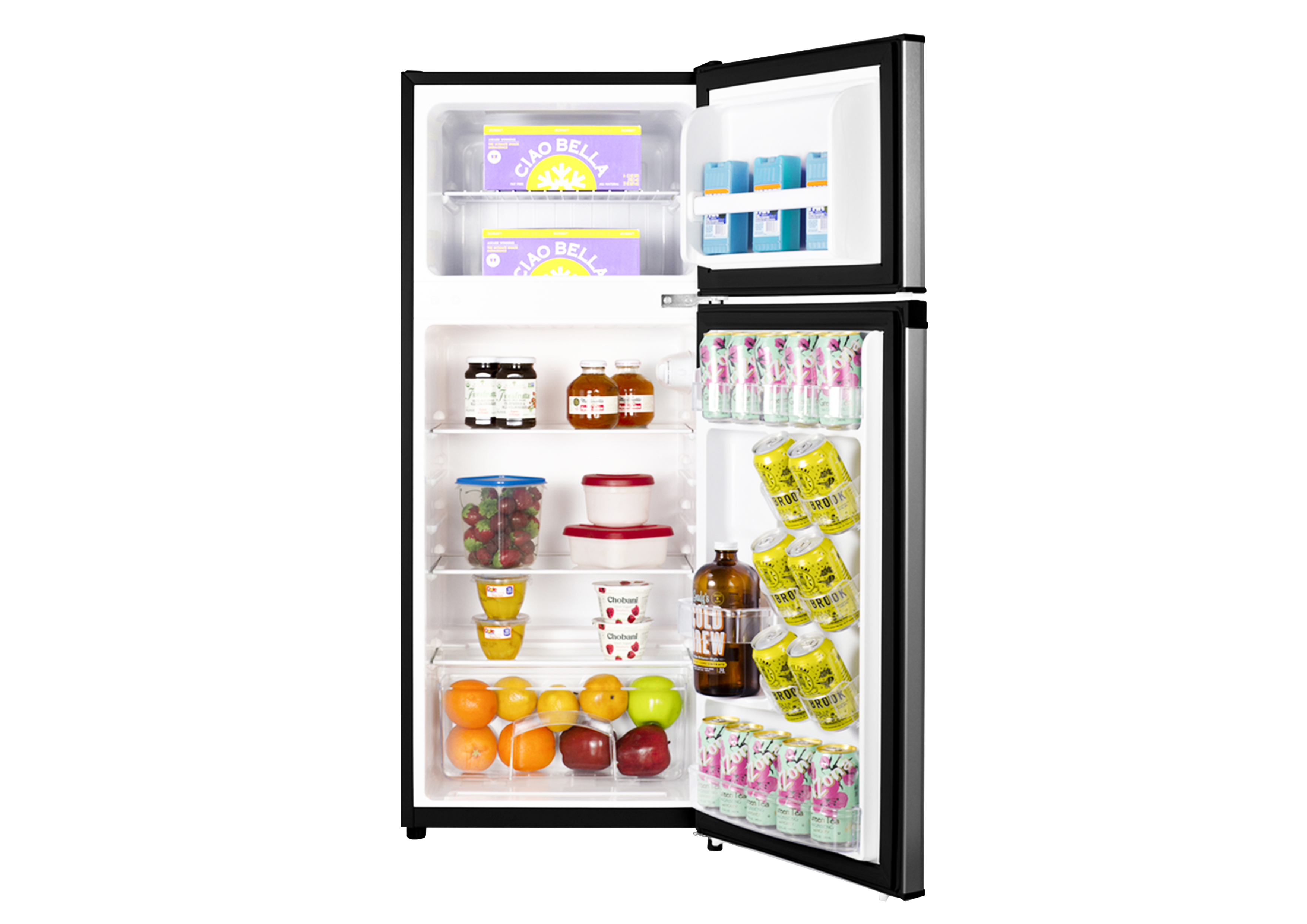Jul 15th 2022 - Monica Cunanan
How to Clean Refrigerator Coils — Cleaning Process for a Commercial Refrigerator Condenser
Refrigeration units play an important role in restaurants, cafeterias, busy kitchens, and commercial kitchens. If a refrigerator or freezer isn't working effectively, an establishment is essentially wasting money by wasting food and missing out on potential sales. If you allow a large buildup of dust, debris, and grime to accumulate on your commercial fridge, it will use more electricity consumption, drive up operating costs, and shorten its lifespan. This can also lead to a compressor failure, which could cost you a lot of money.
If your refrigerator isn't getting cold enough or if it uses too much electricity, it might be time to clean your fridge coils. Regardless of whether you own a reach-in, blast chiller, or any other type of refrigerator, you should clean the coils at least once every 30 days.
How to Clean Refrigerator Coils
If you allow a large accumulation of dust or debris, it can decrease the efficiency of the unit, which means it consumes more energy, increases operating costs, and reduces the unit’s life span. This can also cause a compressor failure, which may result in a costly repair if not caught early.
Regular cleaning of the refrigeration condenser coils is among the easiest refrigeration maintenance jobs to do. To keep your unit running efficiently and at peak performance, clean it at least once every three months.

Cleaning Process for a Commercial Refrigerator Condenser:
- Step 1: Empty it out – Remove all the perishables from the refrigerator before you start. Put them into another container or temporary cooler to keep them fresh.
- Step 2: Turn off power to the machine – Unplug the machine from the wall socket or turn off the electricity from the power source. Locate the condenser coil (or heat exchanger) and fan – Some models may have them located in the front on the floor or on the back of the unit. Older models may have coils across the back of the unit. Read the manufacturer's guide for more information.
- Step 3: Remove the cover or grates – Most units have a condenser cover or grate covering the condenser coil. Make sure to remove it so you can pull out the coils. The grate may come off easily, or it might be held in place by screws. Make sure to wash the grate with soapy water.
- Step 4: Clean off dust or build-up debris – Carefully brush off the dirty refrigerator coils and fan by brushing them off with a stiff bristle brush.
- Step 5: Use a Vacuum Cleaner for coils and surrounding area – To carefully remove any dust layer on or near the coils, you can use a vacuum with a narrow vacuum hose attachment. Do this carefully to avoid damaging the coils. Make sure to clean the food debris around the area as well.
- Step 6: Remove grease – Avoid grease to accumulate to prevent damaging the coils. If there is a lot of stuck-on grease on your refrigerator, use an OEM-approved degreaser to get rid of it. Follow your owner’s instructions for proper cleaning procedures and recommended cleaners.
- Step 7: Straighten any bent condenser fins if necessary – If any of the fan fins are bent, straighten them using a fin straightener.
- Step 8: Reattach the grate – Once everything is cleaned, reattach the grate to the unit.
- Step 9: Switch Power On – Plug the refrigerator/freezer into an outlet and you can now restock your refrigeration unit.
(See more: How To Clean Commercial Refrigeration: Tips For Maintenance And More)
How Often do I Clean Refrigerator Coils
 Most restaurants and food service businesses have a refrigerator routine maintenance contractor that inspects and clean their equipment regularly.
Most restaurants and food service businesses have a refrigerator routine maintenance contractor that inspects and clean their equipment regularly.
However, if you're only getting that maintenance service every 6 months, a lot of junk and buildup of dirt can occur between maintenance visits. That’s one reason why it’s important to check the condition of your refrigerator coils at least once every month and clean them out.
Here Are The Tools You Need
Here's what you need to know to clean commercial refrigerators' condenser coils safely.
- Respiratory Protection (Masks, etc): For those who are sensitive to allergies, you may want to wear a dust mask when cleaning refrigerator coils.

- Flashlight: A flashlight may be useful when cleaning refrigerator coils. Whether your condenser coils are located at the front floor level underneath your unit’s doors or at the back, it can be difficult to see what you‘re doing.
- Screwdriver: Most of the time, the condenser coil is behind a toe-grille that snaps off at the front bottom level of your refrigerator. Sometimes the grill is attached by screws, so you might need a screwdriver. If not located at or near the front, the condenser is probably located behind a back access panel. It’s best to clean the grill cover with soap and clean water before reattaching it.
- Refrigerator Coil Cleaning Brush: A multi-purpose stiff brush may work for cleaning refrigerator coils, but it is better to use an appliance brush, also known as a refrigerator coil brush. Brush the dusty coils gently and fan them out evenly without damaging any of the fins.

- You can also buy a coil condenser brush for this. The cylindrical design of the brush makes cleaning between coils and removing dust from crevices easier.
- Vacuum & Attachment. It’s also helpful if you have a narrow nozzle vacuum attachment designed for cleaning refrigerator coil.

- To vacuum refrigerator coils, use a simultaneous coil-brush and vacuuming technique to avoid straying dust. You'll need to hold the brush in one hand while using the vacuum hose nozzle in another.
- Clean the entire room thoroughly, including the floor area below. Don't forget to clean the adjacent area too. After cleaning your refrigerator coils, you don't want to allow dust from the surrounding area to migrate back into the coils.
Proper Cleaning Solutions for Refrigerator Condenser Coils
If you vacuum the coils regularly, they may be all that‘s needed to clean them out. Refrigeration experts also recommend blowing out dust by using pressurized air cans or more powerful portable compressions for pressure cleaning. If you decide to use this coil cleaning method, be ready for the mess that will result from cleaning up after yourself.
However, if your coils have been exposed to excessive grease and built-up grime, you can use coil cleaners. The problem is that you want to be very cautious not to damage the sensitive fins. If you use the incorrect cleaner or the wrong condenser coil cleaning technique, you could cause more damage than good.
If your commercial refrigeration equipment gets uncontrollable dirty coils are dirty with excess grease and accumulation of grime, it might be worth leaving the deep cleaning to the experts who have the tools and expertise in effective coil cleaning services.
Need More tips for Commercial Refrigeration Units?
We hope this article helps when it comes to cleaning and maintaining your commercial refrigeration units. If you want to know more tips on how to maintain your unit, these articles might help:
- Here's how to keep the proper temperature of your unit even during the hottest seasons of the year:
Maintaining A Commercial Refrigeration Unit During The Summer
- Routine Cleaning is important. Want to know more detailed information on how to clean your unit? Check this out:
How To Clean Commercial Refrigeration: Tips For Maintenance And More
- Here's a quick guide to maintaining your commercial machines?
7 Restaurant Equipment Maintenance Tips For Commercial Kitchens
Need Commercial Refrigeration for your business?
Here at Culinary Depot, we carry different types of commercial refrigeration that are perfect for any business.
May it be:
- Reach-In Refrigerators and Freezers
- Prep Refrigeration
- Merchandising & Display Refrigeration
- Undercounter Refrigerators
- Bar Refrigerator
- Undercounter Freezer
- Worktop Freezers
- Worktop Refrigerators
Contact us or visit our online store for more information about any commercial machines to keep your produce fresh!



